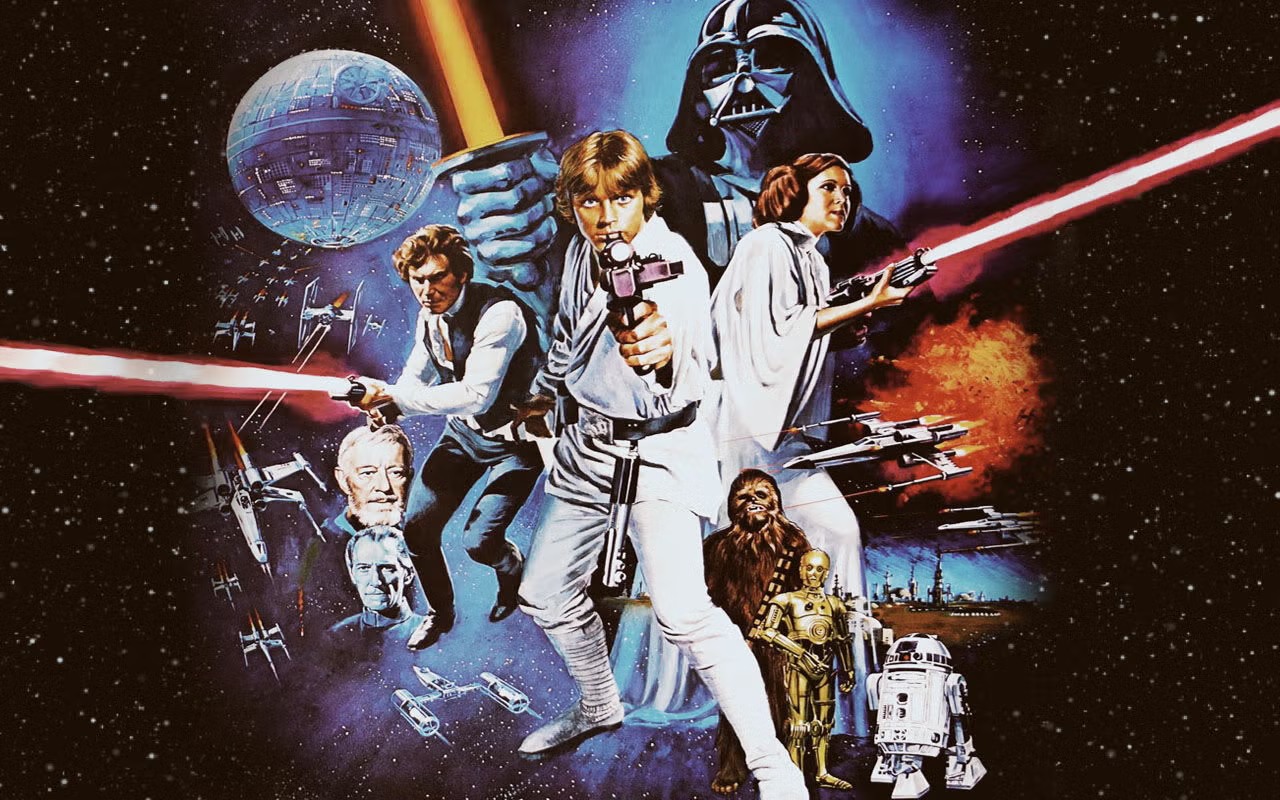Star Wars (1977)

Directed by George Lucas and released in 1977, “Star Wars” (later retitled “Star Wars Episode IV: A New Hope”) revolutionized the landscape of filmmaking, defined the science fiction genre, and became a cultural phenomenon that continues to resonate with audiences worldwide. Set in a distant galaxy amidst a backdrop of interstellar conflict, the film transports viewers to a universe filled with epic battles, memorable characters, and timeless themes of heroism, redemption, and the struggle between good and evil.
The narrative of “Star Wars” unfolds against the backdrop of a galaxy ruled by the tyrannical Galactic Empire, led by the malevolent Darth Vader. The film introduces audiences to Luke Skywalker (played by Mark Hamill), a young farm boy on the desert planet of Tatooine who discovers that he is destined for greater things when he comes into possession of a droid carrying stolen plans crucial to the Rebel Alliance’s fight against the Empire.

Central to the film’s narrative is Luke’s journey of self-discovery and his transformation from a humble farm boy into a heroic Jedi Knight. Guided by the wise Obi-Wan Kenobi (played by Alec Guinness) and aided by the roguish smuggler Han Solo (played by Harrison Ford) and his loyal co-pilot Chewbacca, Luke embarks on a daring mission to rescue Princess Leia Organa (played by Carrie Fisher) from the clutches of Darth Vader and the Empire’s dreaded Death Star.
“Star Wars” is celebrated for its richly imagined universe, populated by a diverse array of alien species, exotic planets, and futuristic technology. George Lucas’s visionary world-building combined elements of science fiction, fantasy, and mythology to create a galaxy far, far away that feels both familiar and wondrously new. The film’s iconic imagery—from the desolate sands of Tatooine to the gleaming corridors of the Death Star—captures the imagination and invites viewers to embark on an epic adventure across the stars.

Visually, “Star Wars” dazzles with its groundbreaking special effects and innovative use of practical models and miniatures. Industrial Light & Magic’s pioneering techniques brought to life spectacular space battles, thrilling lightsaber duels, and awe-inspiring planetary landscapes, setting a new standard for visual effects in filmmaking. The film’s seamless blend of practical effects with cutting-edge technology created a sense of realism and scale that transported audiences into the heart of the action.
Thematically, “Star Wars” explores timeless themes of heroism, friendship, and the struggle against oppression. The film’s characters—from the idealistic Luke Skywalker to the charismatic smuggler Han Solo and the wise mentor Obi-Wan Kenobi—embodied archetypal roles that resonate with audiences of all ages. The conflict between the noble Rebel Alliance and the authoritarian Galactic Empire reflects universal struggles for freedom and justice, resonating with real-world historical and contemporary struggles.

John Williams’s iconic musical score further elevates the film’s emotional impact, with its stirring compositions and memorable themes that evoke the grandeur of epic storytelling. From the triumphant notes of the main theme to the haunting strains of the Force theme, Williams’s music has become inseparable from the “Star Wars” experience, enriching key moments and enhancing the film’s emotional depth.
In conclusion, “Star Wars” (1977) is more than just a groundbreaking work of science fiction—it is a cultural touchstone that continues to inspire and captivate generations of fans around the world. Through its timeless storytelling, unforgettable characters, and visionary world-building, the film transcends its genre to become a timeless epic that celebrates the power of myth, imagination, and the enduring spirit of adventure. George Lucas’s visionary direction, coupled with revolutionary special effects and a resonant narrative, ensures that “Star Wars” remains a defining masterpiece of cinematic history, forever etched in the annals of pop culture as a symbol of hope, heroism, and the boundless possibilities of the human imagination.









